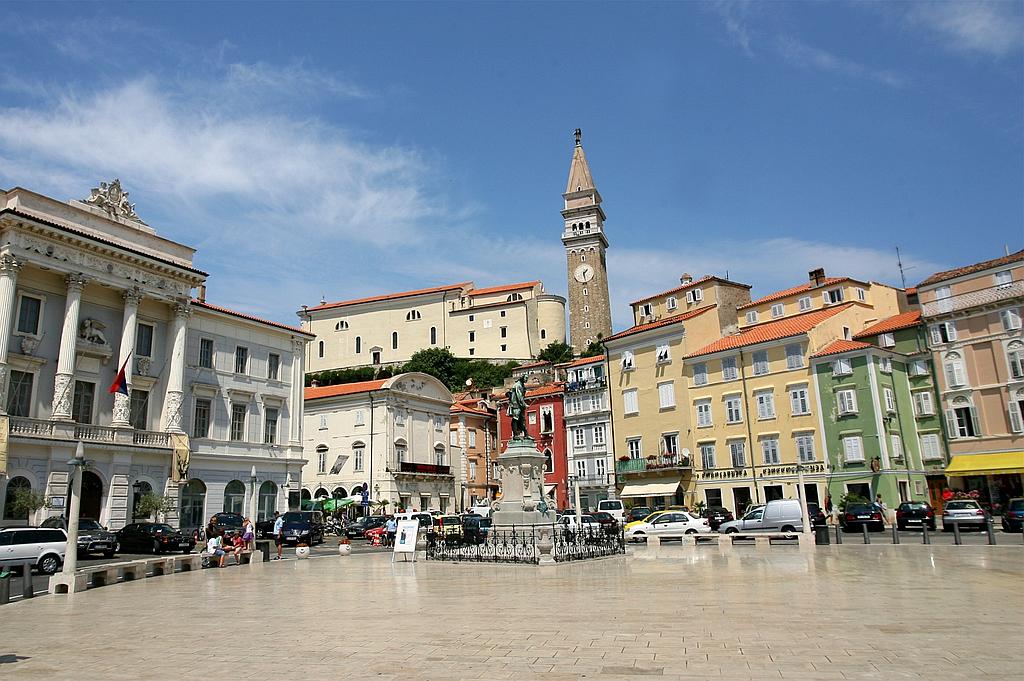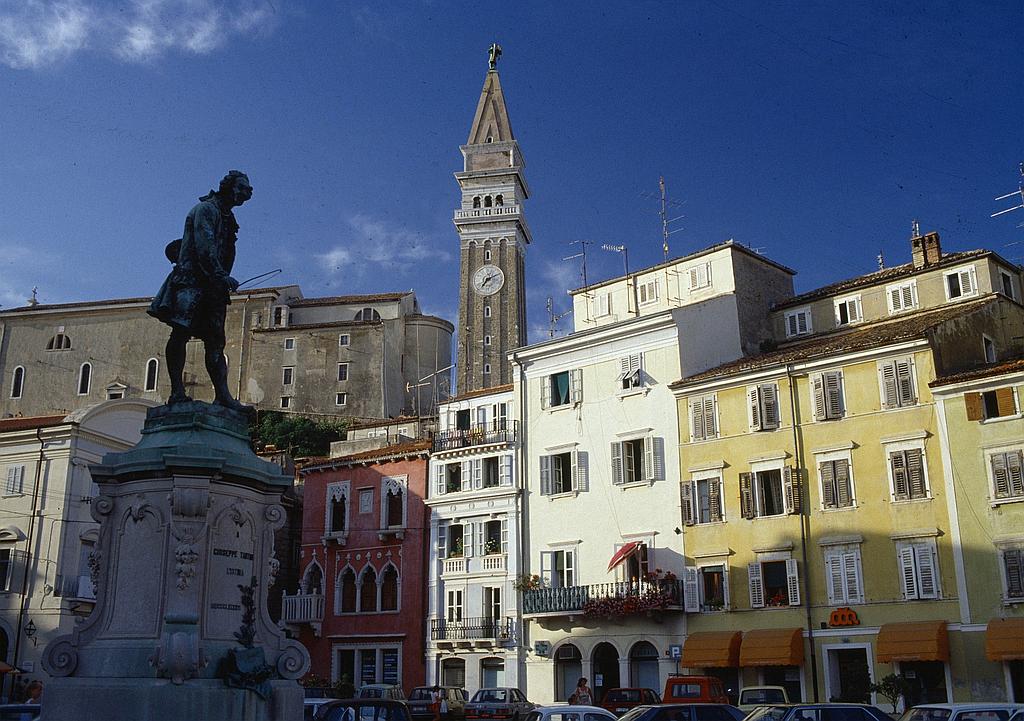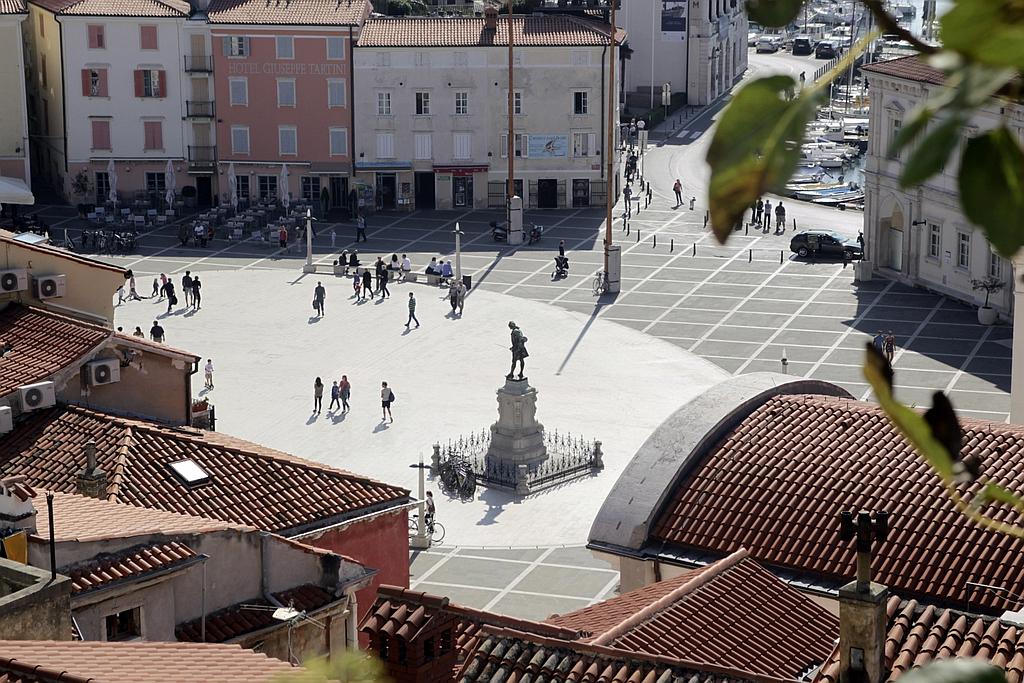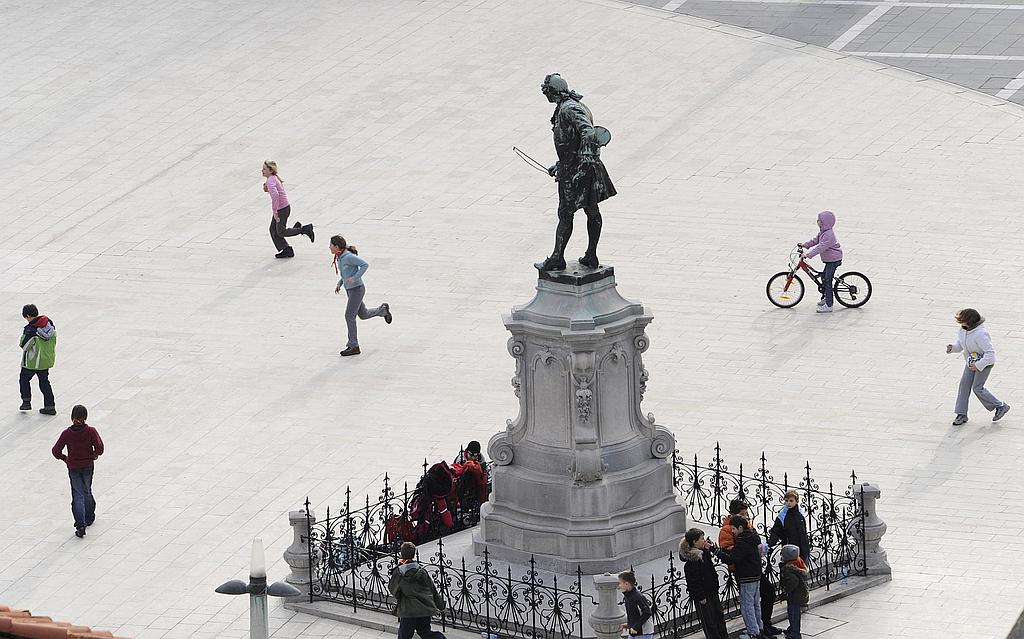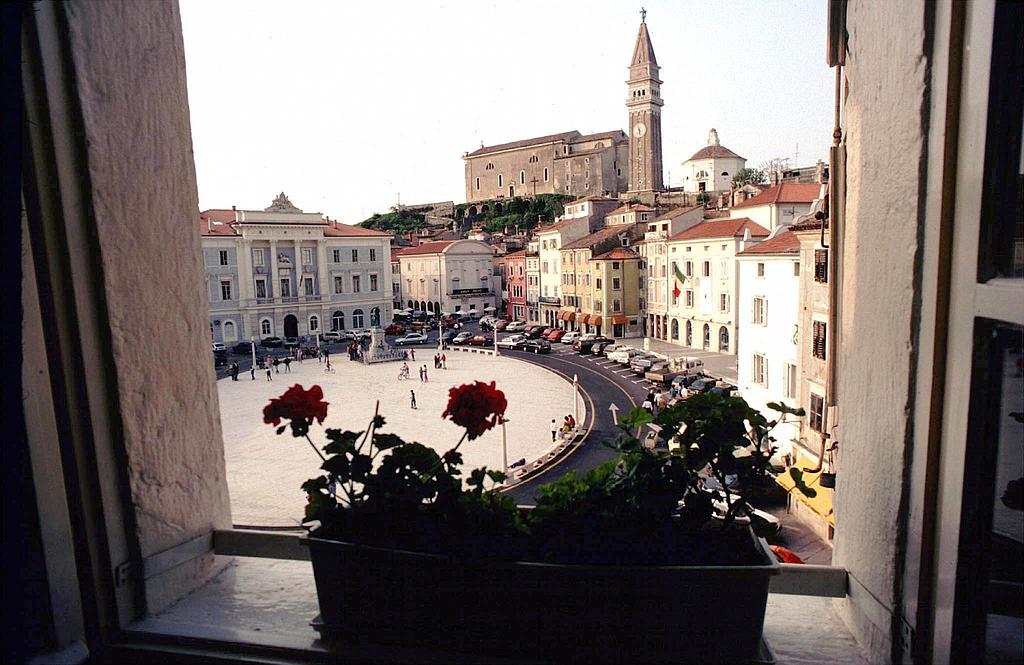
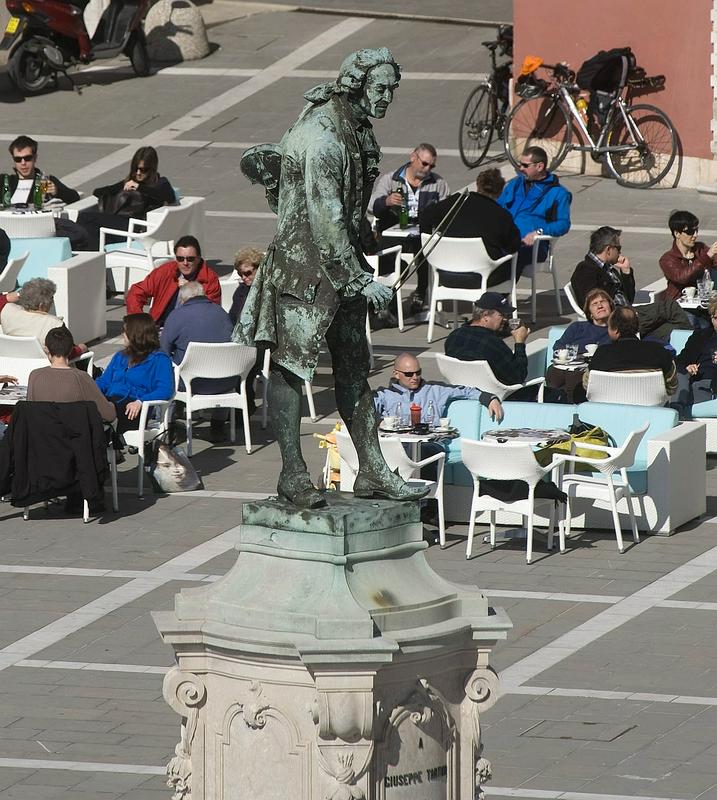
St. George’s Church, whose image graces brochures, postcards, and books, may be Piran’s most famous landmark, but Tartini Square is undoubtedly the heart of the city. For years, the area gave the town its livelihood; now, it serves as a meeting place for people from around the world.
Even though modern-day Piran is mostly associated with the tourist industry, it was once a thriving fishing village. The area of Tartini Square was once a mandrač – an inner harbor that sheltered fishing boats, which headed for the open waters of the Adriaitc Sea every morning. For centuries, the town walls, which marked the entrance into Piran, stood adjacent to the harbor.
In the late 19th century, residents of wealthy houses around the poorly maintained harbor began to complain about its unpleasant smell. In the 1890s, the mandrač was filled and the fishing boats were moved to the main harbor. In its place, the local authorities created Tartini Square, named in honor of the 18th century composer from Piran, who was born in a house next to the square. A bronze statue of Tartini, the work by the Venetian artist Antonio dal Zotta, became the new square’s focal point.
The already expensive houses that overlooked Tartini Square were renovated, some in the neo-Renaissance style of the time. The town grew, and the early 20th century also saw the addition of streetcar tracks that circled around the square.
After World War II, Tartini Square presented an altogether less appealing sight: The streetcar, having been abolished before World War II, was just a memory, and the square was increasingly turning into a parking lot. Even the bronze statue of the famed composer seemed lost among the Fiats, the Volkswagens, and the Citroens of the motorized age.
Finally, in the 1980s, the local authorities decided to renovate the square. The Vienna-based Slovenian-Italian architect Boris Podrecca reimagined the area with a bright marble plaza that not only complements the statue of Tartini but also recalls the area’s onetime role as a harbor – as well as the streetcar tracks that once made a loop in the square. Two stone pillars with Latin inscriptions from the 15th century were also moved to the square.
Today, the renovated square is the site of markets, musical festivals, and art fairs; it also serves as a meeting place for visitors who come to admire Slovenia’s Venetian gem.




















































